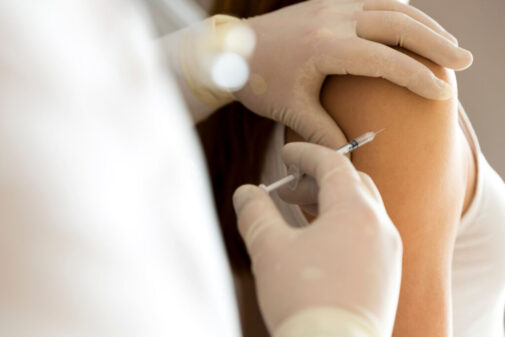Are you concerned about your baby’s head shape?

Does your baby have a flat spot on the side or back of his or her head?
Known as plagiocephaly, the condition can be present at birth or develop over time. Common causes include a baby’s position in the womb, premature birth, prolonged use of car seats and other baby containers (swings, bouncy seats), not enough tummy time and torticollis, a neck muscle tightening on one side that may cause difficulty with neck rotation and tilt resulting in a sleep preference to one side.
The Safe to Sleep campaign, which originated as the Back to Sleep campaign in 1994, was developed to educate caregivers on ways to reduce the risk of Sudden Infant Death Syndrome (SIDS) and sleep-related causes of death in infants. The campaign recommends all healthy infants under the age of 1 year old be placed on their backs to sleep. Since the inception of the campaign, SIDS rates in the U.S. have decreased by nearly 50%. There is no doubt the practice of safe sleep is critical and that the campaign is working well. Unfortunately, we have seen that this correlates to higher incidences of plagiocephaly since the start of the campaign due, we believe, to the prolonged supine positioning.
No matter the cause, plagiocephaly often leaves parents feeling concerned and guilty.
If you are concerned about your baby’s head shape, the first step is to speak with his or her primary care provider. They can recommend individualized treatment and refer the family to an expert. Based on your baby’s age and severity of the plagiocephaly, physical therapy may be the recommended course of action. In our research, we have found that about 75 percent of infants with mild to moderate cases of plagiocephaly can be effectively treated with a tailored physical therapy approach that includes educating parents on what they can do at home.
Daily treatment at home should include a focus on tummy time (when the baby lays and plays on his or her stomach rather than back) and limiting time spent in car seats or other equipment. It’s critical that parents create an environment that optimizes the baby’s awake time to strengthen the neck and encourage an increased range of motion while limiting the prolonged supine positioning. This can greatly reduce the likelihood of a flat head.
More severe cases of plagiocephaly may require a cranial orthotic, or helmet. In our practice, helmets are custom fitted based on measurements of your baby’s head gathered through a laser-guided digital scanner. The helmets are typically worn 23 hours a day, seven days a week for three to five months. Helmets are extremely successful in correcting asymmetry; we have seen a consistent 95 percent success rate with my patients over almost two decades; these findings were published in the Plastic and Reconstructive Surgery Journal.
There is a recent trend in China that involves parents purchasing corrective molds from stores to round their baby’s head. It’s important to note that poorly fitted helmets on babies in need, or helmets places on babies who are not need of one in the first place will not lead to a beneficial result and can cause harm. Helmet therapy should be recommended by a clinician and overseen by a health care professional.
Don’t hesitate to express head shape concerns with your primary care provider so you can begin effective treatment and be connected with the proper expert to assess your child’s needs. To contact the Head Shape Evaluation Clinic at Advocate Children’s Hospital, call (847) 318-9330. Learn more at www.childrensfaces.com.
Dr. Frank Vicari is a pediatric plastic & craniofacial surgeon and the chief of pediatric plastic surgery/craniofacial surgery at Advocate Children’s Hospital.
Related Posts
Comments
About the Author
Dr. Frank Vicari is a pediatric plastic & craniofacial surgeon and the chief of pediatric plastic surgery/craniofacial surgery at Advocate Children’s Hospital.

















